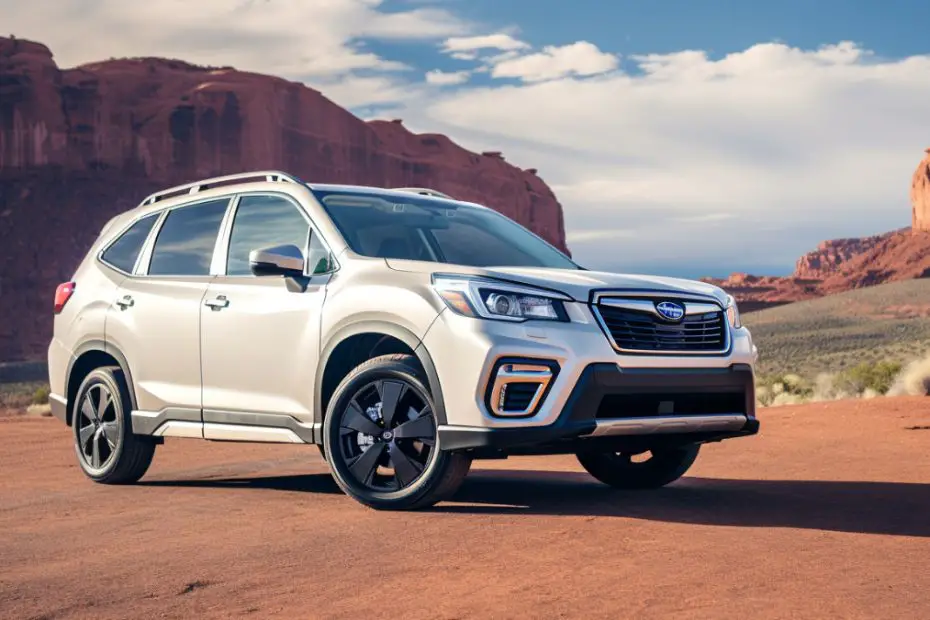It can be quite frustrating when your Subaru Forester, which used to start normally, suddenly goes “dead” on you. When you push the start button or turn the key, it only cranks or clicks- sometimes, no response.
Why Subaru Forester won’t start? Typically, there are 8 primary culprits as follows:
- Shift interlock issue/faulty neutral switch
- Broken/faulty timing belt
- Alternator failure
- Dead/drained battery
- Incompatible transponder chip/security lockout
- Faulty Engine Control Module (ECM) or sensors
- Weak/malfunctioning ignition coil
- Faulty starter motor
But how do these issues affect starting, and what are the symptoms and solutions? I’ll cover all these in the next sections – so read on.
Why Subaru Forester Won’t Start? Common Causes and Solutions

It’s true that there are other possibilities, like an empty fuel tank, spark problems, and a bad fuel pump. Nevertheless, I base the list of common causes from what I’ve encountered so far working with Subaru Foresters. But just to keep you reassured, I’ll touch a bit on the less common issues later on.
At the moment, let’s shift our focus to the primary causes. For that, I have this table for the common causes why your Subaru Forester won’t start, along with the solutions.
| Common Causes | Solutions |
|---|---|
| Shift interlock issue/faulty neutral switch | Shift the car from park to neutral. |
| Adjust or replace the neutral switch if faulty | |
| Broken/faulty timing belt | Replace the timing belt |
| Alternator failure | Replace the alternator |
| Drained/dead battery | Recharge the battery or replace it if it still doesn’t hold charge |
| Incompatible transponder chip/security lockout | Use a key fob programmed for your vehicle |
| Reprogram your key fob | |
| Faulty Engine Control Module (ECM ) or sensors | Replace the ECU or sensors if they are faulty |
| Weak/malfunctioning ignition coil | Replace the ignition coil |
| Faulty starter motor | Replace the starter motor or starter solenoid (whichever is defective) |
Note that, most Subaru Forester owners manage to get around the no-start issue. So, I’ll base some of the solutions here on their personal experiences, along with my expertise.
1. Shift Interlock Issue (Faulty Neutral Switch)
Your Subaru Forester has a “shift interlock.” When engaged, it keeps your vehicle in a “park” position. Unfortunately, you can’t start your Subaru Forester with a manual transmission in the park position – only in neutral.
Timothy, a Subaru Forester owner, attests to shift interlock as a starting issue. He couldn’t start his 2017 Forester after parking. Finally, he managed to put the vehicle into neutral, and it started just fine.
The following symptoms tell you that your Subaru Forester is in gear shift lock:
- No brake lights appear when pressing the brake pedal
- A transmission warning light on your dashboard
- Key stuck in ignition
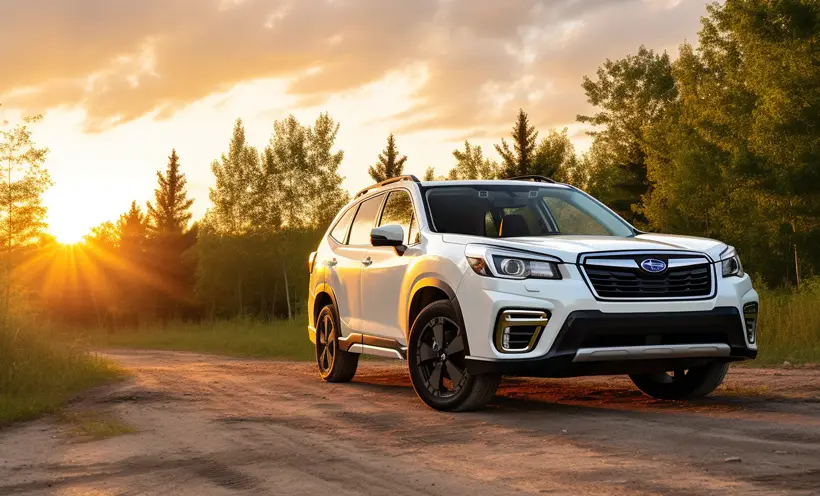
Solution:
Unlike what most would tell you, you don’t need to have the engine running to move the shifter from park to neutral. You only need to have your key in the “ON” position to get started.
With your key in position:
- Fully press on the brake pedal and shift to neutral. This should release the shift interlock system.
- Remove the key, insert it again, and start your car from neutral.
The process may vary across Subaru Forester models. So, refer to your vehicle’s manual for the proper way to release the shift lock.
Note that it’s not always a guarantee that this procedure will disengage the shift interlock. This table highlights why shift interlock release may fail.
| Potential Cause for Shift Interlock Failure | Solution |
|---|---|
| Malfunctioning shift interlock solenoid | Inspect and replace the solenoid or its wiring |
| Mechanical issues like stuck/broken transmission linkages | Inspect and replace/repair broken parts |
| Physical obstructions like debris | Clean and remove obstacles |
| Weak/dead battery (shifting needs power to work) | Inspect and charge/replace the battery |
Often, a faulty shift interlock solenoid will produce a buzzing/clicking noise as you attempt to shift out of park.
2. Broken/Faulty Timing Belt
Your Subaru Forester likely has a rubberized timing belt if it’s a 2013 model or older. It so happens that the timing belt may snap, and it will cut off the connection between the driveshaft and camshaft. This prevents your Subaru Forester from starting.
One owner of a 2001 Subaru Forester attests to a timing belt issue. Apparently, the timing belt broke, and his vehicle wouldn’t start.
Now, with a timing belt problem, you’ll often hear the starter motor engage. However, the engine won’t start. Other times, the engine may crank without firing.
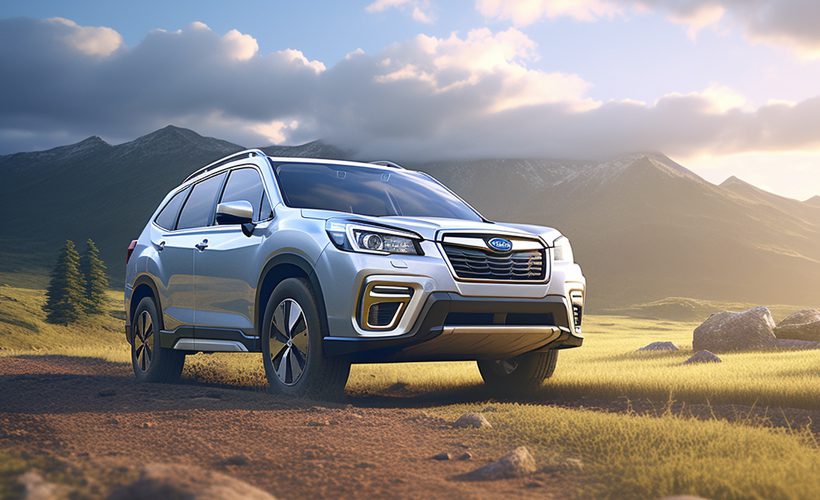
Solution:
A replacement is the only remedy for a broken timing belt. To keep you on the safe side, Subaru recommended timing belt inspections every 30,000 miles. A mandatory replacement should be done at 105,000 miles.
3. Alternator Failure
The alternator is your Subaru Forester’s charging system that supplies power to the ignition system. So, if it fails, you’ll have difficulties starting your engine.
Primarily, the warning signs of an alternator failure are:
- A dashboard warning light with a red battery symbol
- Grinding, whining, or squealing noises (while the alternator is running)
- Vehicle stalling shortly after jump starting
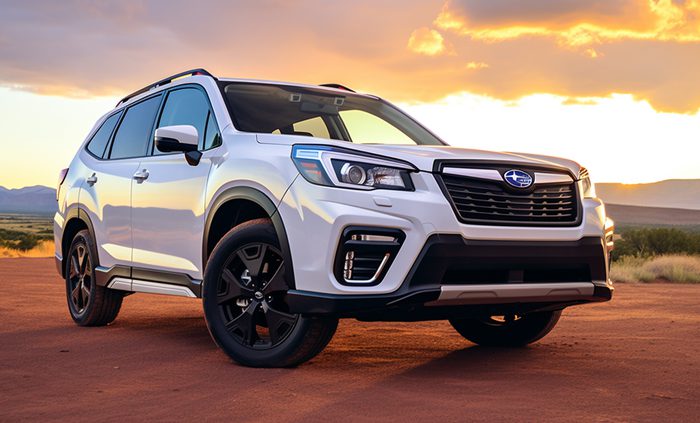
Solution:
To be 100% sure it’s an alternator problem, jump your vehicle and use a multimeter to check the voltage at the battery terminals. A healthy alternator should read at least 14 volts. Usually, replacement is the remedy for a bad alternator.
4. Drained/Dead Battery
Apparently, Subaru batteries don’t perform up to expectations. In fact, lawsuits against Subaru batteries can attest to that. Owners of Subaru Forester 2015-2020 models will more likely face the issue of premature battery drain.
The symptoms of a discharged or dead battery are as follows.
- The engine cranks slowly or not at all
- Not starting clicking noise from the dash (rapid clicking)
- Dim/flickering lights
- Dashboard warning
Note that some of these symptoms may indicate an underlying problem with your alternator. So, to be sure your battery is the culprit, take a voltage reading at rest. A good battery should read anywhere from 12.4 volts to 12.6 volts.
Solution:
The best course of action will be to recharge. But if it still reads low voltage (below 12), replace the battery. If your Subaru Forester won’t start after a battery replacement, explore other potential causes.
5. Incompatible Transponder Chip/Security Lockout
It’s true that this is an issue you don’t always come across. On the threads of a 2010 Forester that wouldn’t start, one user gives his account. “My chip fell out while changing the battery, after which my Forester wouldn’t start. I managed to locate it, put it back in place, and the vehicle started.”
Just so you know, a transponder chip is part of your Subaru’s immobilizer system. Essentially, it’s embedded in your key or remote key fob. Apparently, the immobilizer has to verify the authenticity of the transponder chip before allowing the vehicle to start.
So, if the chip falls off or isn’t recognized, you won’t be able to start your Subaru Forester. But how else do you know your transponder chip is missing or not recognized? Here are the symptoms:
- The engine cranks but doesn’t start as the immobilizer cuts off fuel delivery and prevents ignition spark
- The engine doesn’t crank; there is no response from the ignition system
- Dashboard message “invalid key” or “no key detected.”
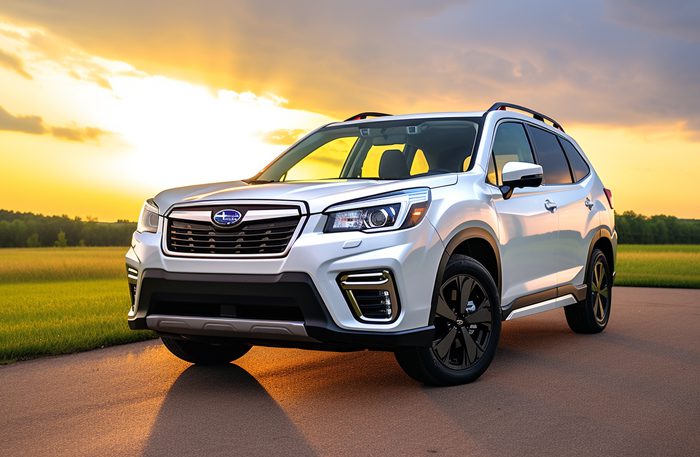
Solution:
The best solution would be to get a replacement key from the Subaru dealership. They’ll be able to program a new key with the exact transponder code for your vehicle.
6. Faulty Engine Control Module (ECM) Or Sensors
The ECM is the computer that controls and guides the engine’s functionality. So, a faulty ECM means your Subaru Forester’s engine isn’t getting the information it needs to function accordingly. This causes difficulty starting the engine.
At times, you’ll need multiple attempts or extended cranking before the engine starts. Other times, the engine may not start at all.
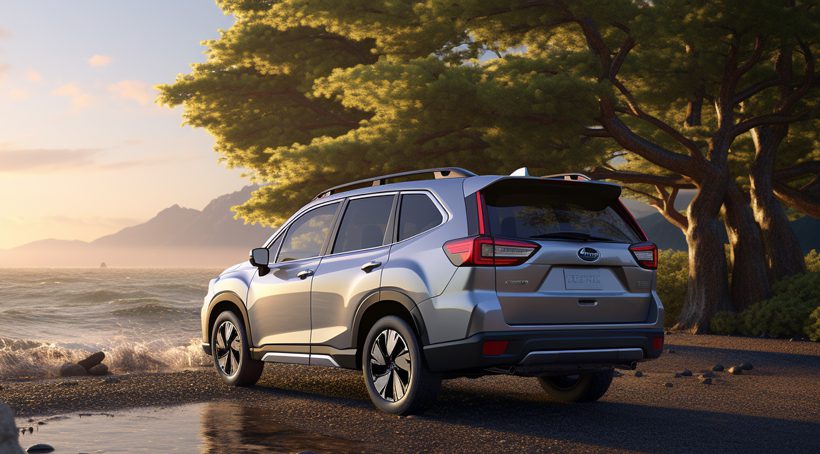
Solution:
First, do an ECU or ECM testing following these steps:
Step 1: Ensure all wiring harnesses and plugs are connected firmly
Step 2: Check the main ECU fuse, just in case it’s blown. A blown fuse will have a visible gap in the wire, or in some cases, a metallic smear inside the glass housing. Replace if blown.
Step 3: Try to communicate with the ECU using a diagnostic scan tool.
If the fuse and the connections check out but there’s no communication, the ECM is faulty. Your best bet is to have a replacement at your Subaru dealership.
7. Weak/Malfunctioning Ignition Coil
A bad ignition coil means one thing – it can’t fire the spark plug. Ignition coil problems are most prevalent when your engine is cold.
There are two possible scenarios when trying to start your Subaru Forester with a bad ignition coil. The first possibility is that the engine won’t start at all. Alternatively, your engine may start after several attempts.
Solution:
The good news is that it’s pretty easy to diagnose a bad ignition coil. Here’s a step-by-step process:
Step 1: Locate the ignition coil – it typically has four marked spark plug wires connected to it
Step 2: Unplug the four wires. If they’re not marked, use a white marker to indicate the number before unplugging.
Step 3: Use a multimeter to measure the resistance of the two left outlets simultaneously. Do the same for the two right outlets.
A good ignition coil should have a resistance reading of 0.73 ohms. Any reading that’s 10% lower or above is acceptable. However, if it’s way above or below that range, your ignition coil needs replacement.
8. Faulty Starter Motor
The starter motor in your Subaru Forester is what initiates your engine’s combustion process. So, if it fails or malfunctions, you’ll have problems starting the engine.
In some instances, your engine may fail to start completely. Other times, you’ll experience intermittent starting – engine starting inconsistently.
The following are some major symptoms of starter motor failure.
- Frequent need for jump-starts
- Engine cranking but not starting
- Clicking noise when starting
- Grinding or whirring noises
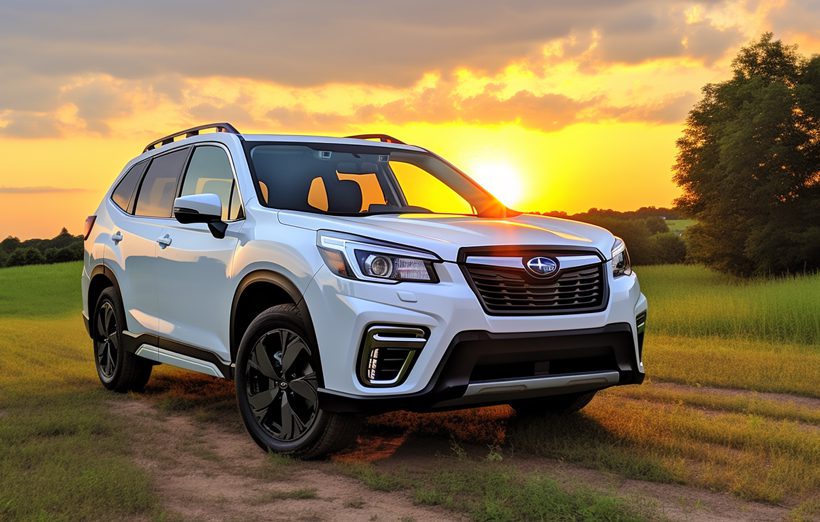
Solution:
Replacing your starter motor is the best remedy. But before then, inspect the starter motor connections and the starter solenoid just to be sure.
Tapping your starter may work at times. This is especially the case if the starter motor solenoid is stuck.
Other Reasons Why Your Subaru Forester Turns Over But Won’t Start
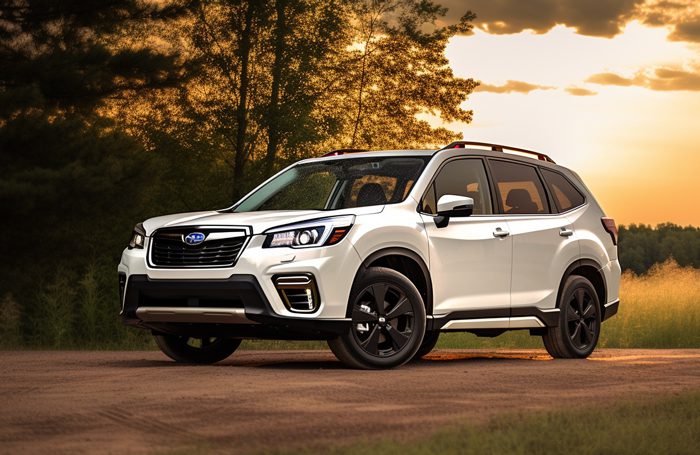
So far, I’ve discussed eight potential reasons why your Subaru Forester isn’t starting. However, if they don’t fix the problem, there are other potential causes to consider. Refer to the table.
| Other Potential Causes | Solutions |
|---|---|
| Failed fuel pump | Check fuel pressure and replace the pump if there’s no pressure. |
| Empty fuel tank | Fill your tank with fresh fuel |
| Loose/corroded battery cables | Keep the battery cables snug and clean the corrosion buildup |
| Bad engine ground | Ensure ground wires connecting the engine block and body are snug and free of corrosion |
| Failed MAF sensor | Replace MAF sensor if readings are out of spec |
FAQs
Let’s answer common questions related to “Subaru Forester won’t start.”
It may be one of four reasons: a weak battery, a poor battery connection, a bad ground connection, or a poor starter electrical connection. In the case of a weak battery, you’ll often hear rapid clicking noises.
Test for battery voltage at the fuel pump harness connector using a multimeter. No voltage means a faulty pump or fuel pump relay. You can also monitor pressure with an external fuel pressure gauge. Low or fluctuating pressure indicates a faulty fuel pump.
A bad fuel filter can cause hard starting, intermittent starting, or no-start conditions. It can be because of restricted fuel flow, loss of fuel system prime, or potential electrical/component failure in the filter itself.
Conclusion
To sum up, a Subaru Forester that won’t start can be attributed to one of these common causes. Note that it’s best if you take a methodical troubleshooting step rather than replacing parts randomly. Doing this will help you zero in on the true failed component and get your Subaru Forester running again.
Also, it would be prudent to have your Subaru Forester serviced regularly. This should prevent starting problems in the future and extend the life of your Forester.
